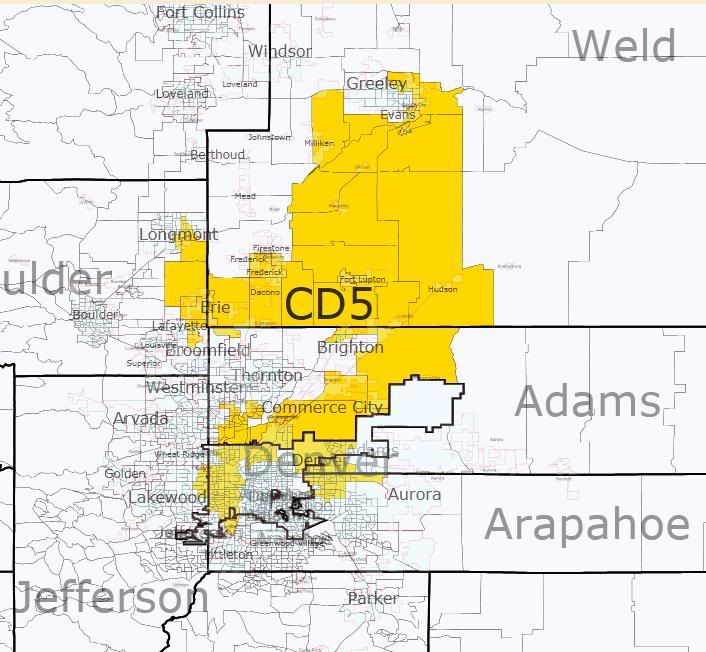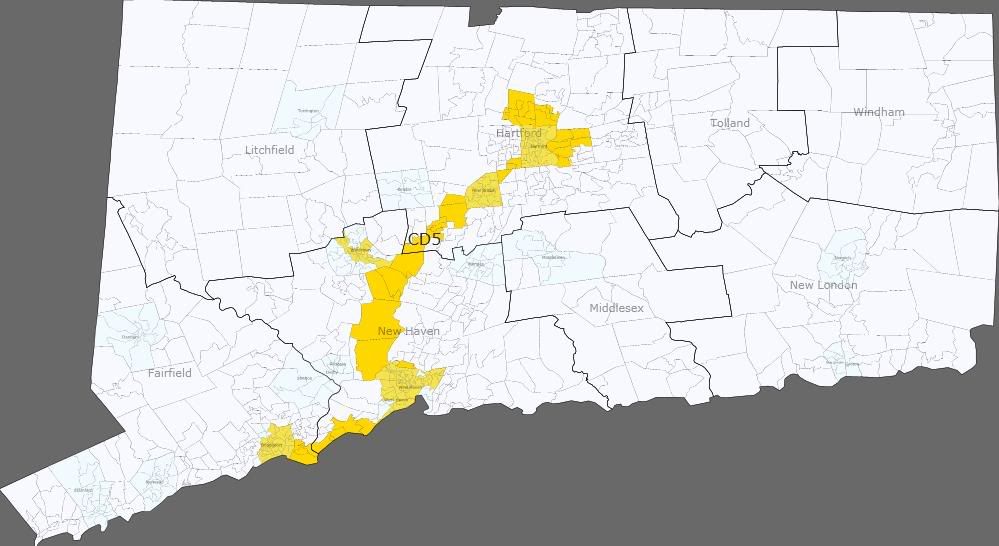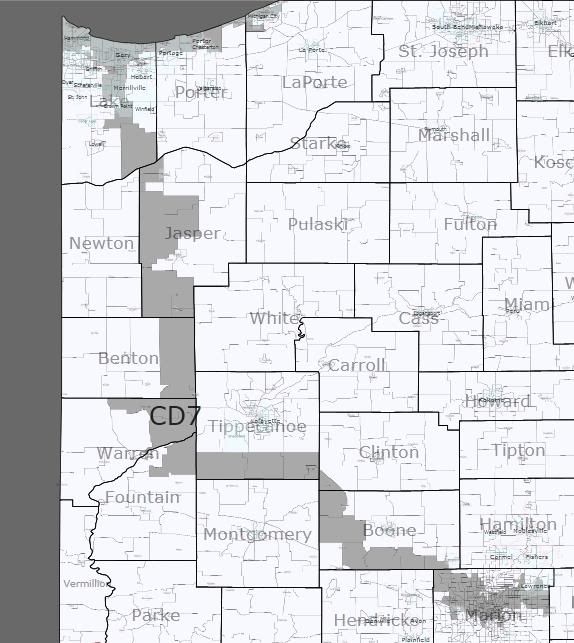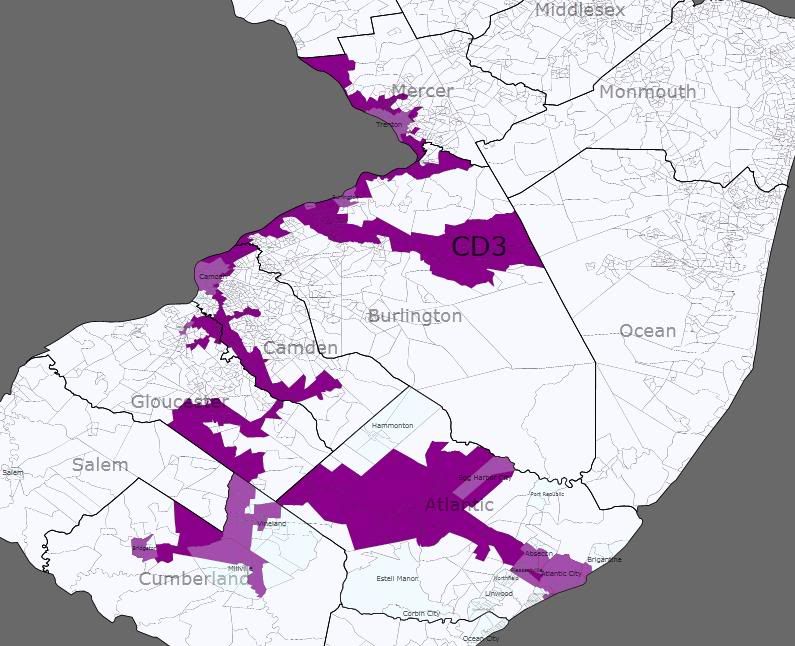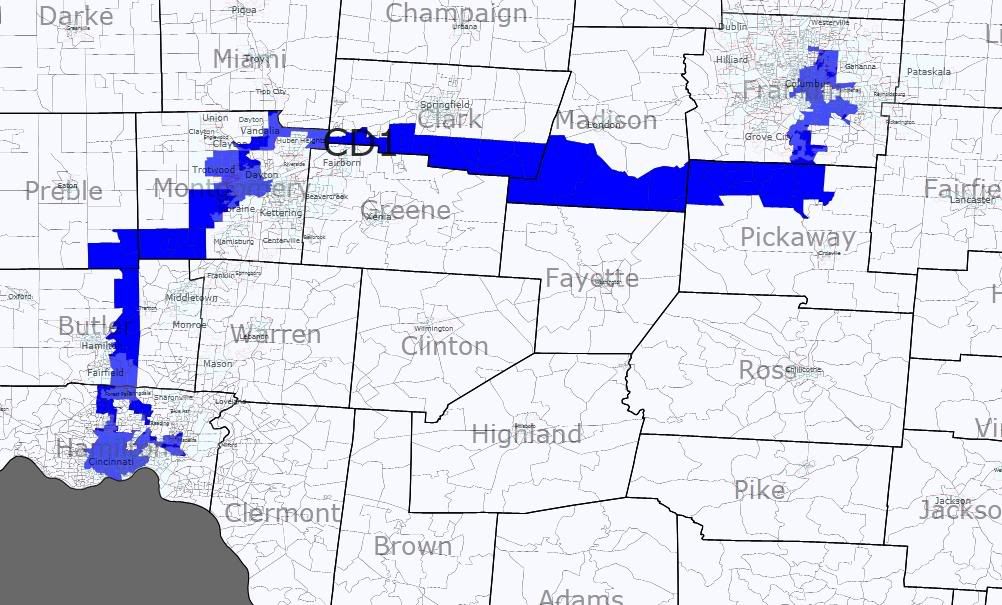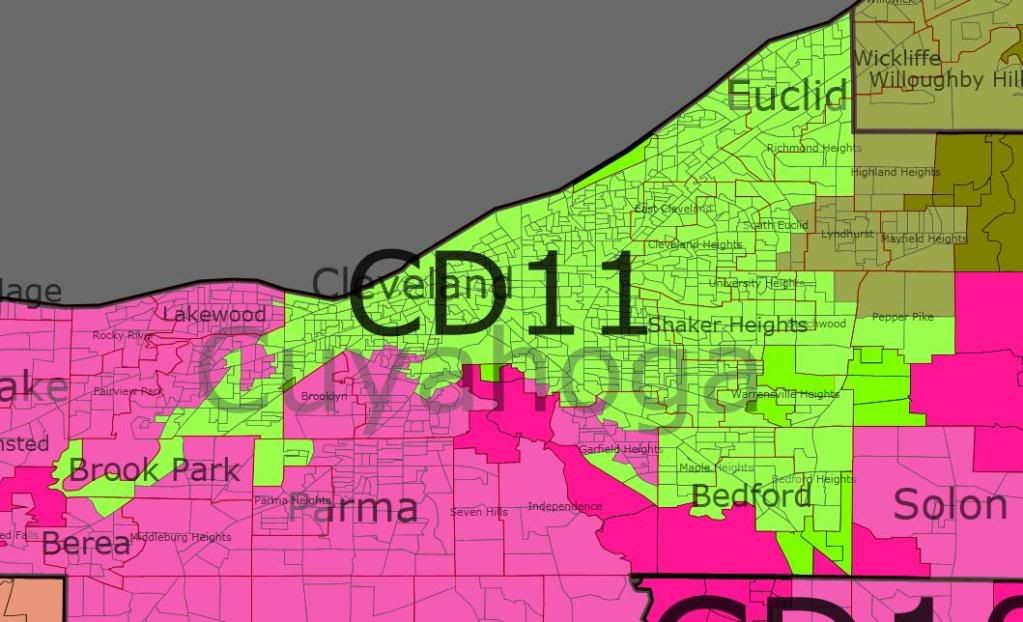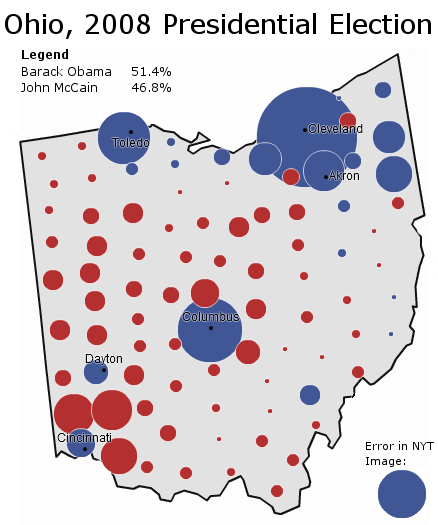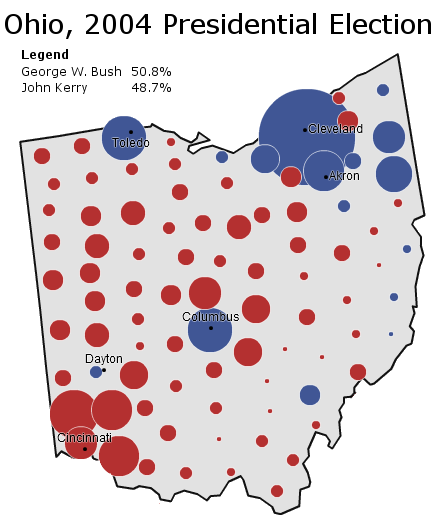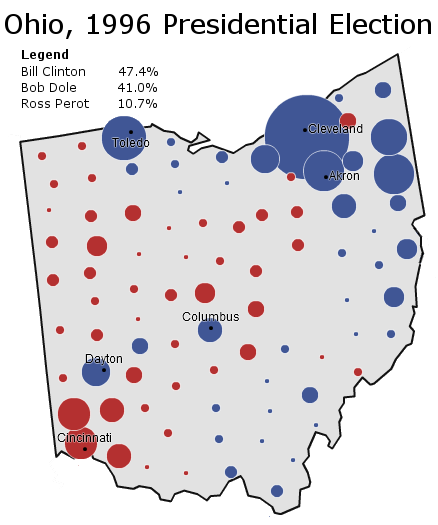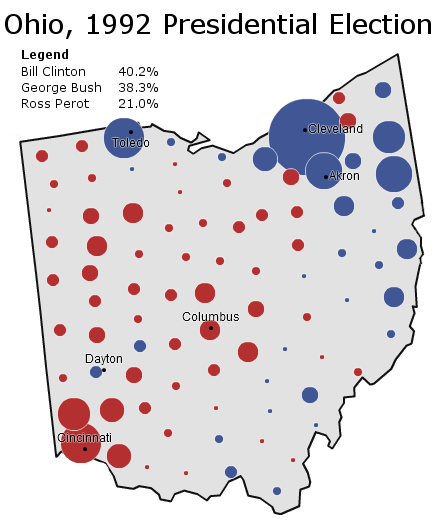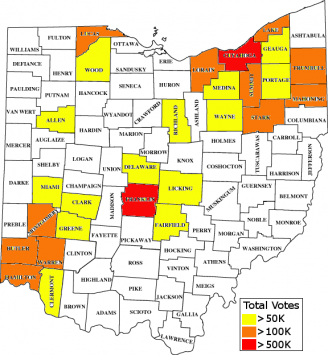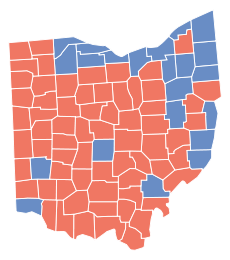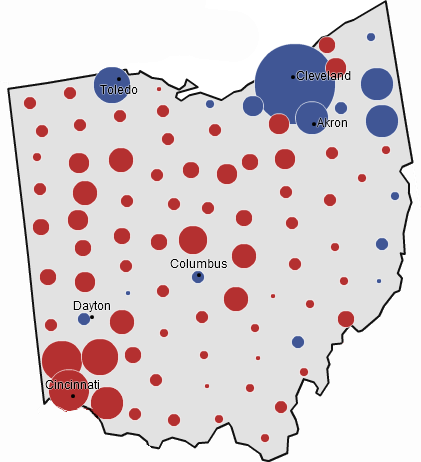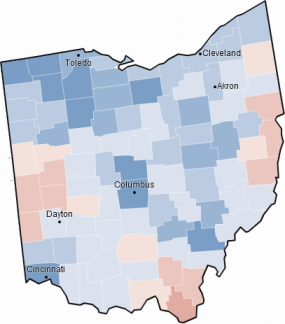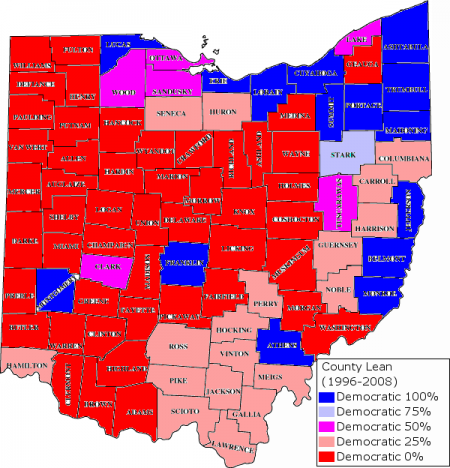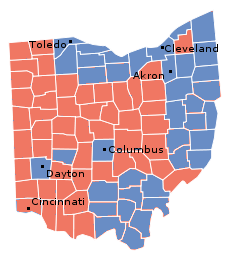Polls have now closed in all three states with primaries tonight: Indiana, North Carolina, and Ohio.
RESULTS
- IN: Associated Press | IN SoS | Politico
- NC: Associated Press | NC BoE | Politico
- OH: Associated Press | OH SoS | Politico
9:51PM: Well, this thread is getting a bit obese. Let’s move this discussion over here.
9:45PM: Get ready for a runoff between Elaine Marshall (37%) and DSCC fave Cal Cunningham (27%) in North Carolina.
9:43PM: With half the vote in, Krikorian leads Yalamanchili by 40-34.
9:38PM: So, er, looks like we jumped to conclusions a bit in IN-09 – Hankins is now fewer than 300 votes behind Young. But it still looks like Young is favored.
9:37PM: Risk loses Kamchatka. The AP calls IN-08 for Larry Bucshon. (Hey teabaggers — vote for Trent out of spite!)
9:35PM: The AP calls OH-02 for Jean Schmidt. She scored 62% of the vote this time.
9:33PM: Unreal. Looks like Dan Burton is gonna live again — he’s at 29.7% of the vote, just over 2000 votes head of Luke Messer with 4 precincts outstanding. What a pathetic showing for Burton!
9:25PM: Despite Travis Hankins’ exciting late surge, Todd Young has pulled away with an almost 2K vote lead. Less than 10% of the vote is outstanding, which means that fewer than 5K more ballots are still out there. Almost impossible to make up that gap. (And incidentally, Mike Sodrel pulled back into second place.)
9:22PM: Elaine Marshall’s share of the vote keeps slipping downward. She’s now just above 37%.
9:09PM: With 477 of 587 precincts in, Todd Young leads Travis Hankins by 225 votes in IN-09.
9:03PM: With 9.5% of the vote in, Lee Fisher leads Jennifer Brunner by 56-44.
9:00PM: I note that Dan Coats won his nomination with about the same percentage as Alexi Giannoulias won his.
8:53PM: Whoa, check out IN-09 — Young leads teabagger Travis Hankins by 34-33, with 30% for Sodrel. Still about a fifth of the vote left to count there.
8:51PM: Risk is now back up by 31-29 in IN-08, but there are still 71 Bucshon-friendly precincts outstanding in Evansville left to count.
8:49PM: Whoa mama joe! In Ohio, it’s still 52-48 Fisher with 7% of the vote in.
8:47PM: Worth noting: Neither Kissell nor Shuler’s primary opponent filed an FEC report, and Shuler’s guy doesn’t even have a contribution link on his website.
8:46PM: The problem for Dan Burton? He has no strongholds left, and his Hamilton County performance is quite weak. This should be very close.
8:45PM: Buschon now up by 31-30 based on his strength in Evansville. 2/3rds of the vote now in.
8:43PM: Almost 2/3rds of the votes are now counted in IN-05, and Burton leads Messer by 31-28. The Hamilton County votes, which are starting to come in now, are split 25-25-25 for Burton, Messer, and McGoff.
8:41PM: The AP calls the Indiana Senate primary for Dan Coats.
8:41PM: Note that both Shuler and Kissell voted against healthcare — are we seeing some fallout there?
8:38PM: NC-11: And Heath Shuler is up just 57-43 against Aixa Wilson.
8:37PM: NC-08: Dem Rep. Larry Kissell up just 60-40 against challenger from the left with 15% in.
8:36PM: A bit over half of the vote is in, and Dan Burton leads Luke Messer by 32-30.
8:29PM: Risk only up 12 votes in IN-08, 30-30, she’ll continue to lose ground as more of Vanderburgh County comes in.
8:26PM: Harold Johnson leads D’Annuzio by 35-34 in NC-08. Looks like a runoff is a live possibility here.
8:25PM: Now that a bit over a quarter of the vote is in, Elaine Marshall leads Cal Cunningham by 38-28. Ken Lewis is at 15.
8:22PM: With a bit over half the vote counted in IN-09, Young leads Sodrel by 37-31, while teabagger Travis Hankins is close behind with 29%.
8:21PM: Teabagger Kristi Risk now only leads Buschon by 300 votes in IN-08, now that Evansville (Buschon’s home base) is starting to report.
8:19PM: In NC-08, Harold Johnson leads businessman Tim D’Annuzio by 37-34. Looks like that’s just the early vote, though.
8:18PM: NC-10: McHenry comfortably ahead with a small number of votes in, 60-25.
8:16PM: Check out OH-16, where Matt Miller is leading NRCC fave Jim Renacci by 72-23 thanks to some early votes in in Ashland, his home county.
8:13PM: The bean counters at SSP labs think that a runoff is likely in North Carolina. There’s a huge chunk of eastern NC that’s largely African-American where Ken Lewis is going to do better than he’s been doing right now, as well as Durham/Mecklenburg counties outstanding.
8:11PM: With under half of the vote in, teabagger Kristi Risk leads DC-backed surgeon Larry Buschon by 31-26. Wow!
8:10PM: The AP has called IN-02 for Wacky Jackie Walorski.
8:09PM: IN-09: Todd Young leads Mike Sodrel 38-33, with Travis Hankins back at 26.
8:08PM: In North Carolina, the Senate race is now 39M-27C-16L, but as Tom Jensen points out, the minor candidates may force this into a runoff.
8:04PM: With just 11 precincts in (but also a big chunk of votes in from Franklin County), Fisher leads Brunner by 52-48 in Ohio.
8:00PM: The AP has declared GOP Rep. Mark Souder the winner of his primary. I’m kind of surprised!
7:57PM: Dan Burton is in a very tight race. With 40% in, he leads Messer by 33-31.
7:56PM: IN-04: Rokita crushing 45-18 with about a third of the vote in.
7:56PM: IN-03: Souder very likely to hold on – 49-34 with 72% in.
7:55PM: IN-02: Wacky Jackie now up 57-31 with 43% in.
7:48PM: With the early vote in North Carolina in, Elaine Marshall leads Cal Cunningham by 39.5% to 26%.
7:42PM: Kristi Risk now ahead by just 15 votes in IN-08 (216 of 635 precincts reporting).
7:40PM: With 28% of precincts in statewide, Dan Coats leads Marlin Stutzman by 42%-30%.

